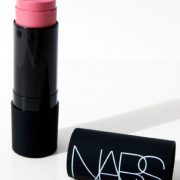The main characteristics
Essential oils are slowly but surely becoming an insider tip.
The beautician Alexandra Soveral, who is in demand in London, New York and Los Angeles, gives some advice on how to use essential oils at home for healthy, good-looking skin in her book Perfect Skin, which is well worth reading. We have tried out some of her advice and are thrilled.
#Advertising #Independent recommendation #Becauseweloveit
The market for essential oils is still tiny compared to the gigantic market for conventional cosmetic products. Nevertheless, or perhaps precisely because of this, there are some fake products on the market. When buying essential oils it is worthwhile to pay attention to the following:
1
Essential oil without oil admixtures
The name component oil is easily misunderstood in the case of essential oils. Because in contrast to vegetable oils such as olive, rapeseed or almond oils, essential oils do not contain any fats. From a chemical point of view, essential oils are concentrated liquid mixtures of substances obtained by steam extraction from a wide variety of plants, by mechanical processes (cold pressing of citrus fruits) or by an extraction process with solvents (a process for essential flower oils).
Essential oils are hardly soluble in water and have a very intense smell. Chemists refer to them as volatile substances.
Important for the effect is that you buy a pure essential oil, not an essential oil that has been “stretched” with normal and much cheaper vegetable oils.
The renowned American aromatherapy expert Jade Shutes advises to test the authenticity of the essential oil as follows: one drop of essential oil does not leave a ring of fat on a leaf compared to one drop of common vegetable oil. Jade Shutes itself restricts that this is not true for all essential oils. Essential oils extracted from sandalwood or certain types of camomile can leave a slight ring of fat.
We have tried it: Yes, there is a difference in this paper test, but it takes a little experience to see the difference clearly depending on which normal vegetable oil you test against.
In our experience, the quality of the essential oil is easiest to determine on your own skin, the back of your hand or between your fingertips. You can feel whether the essential oil, chemically a volatile substance, runs on the skin or feels rather thick or greasy because it has been mixed with normal oil.
2
Price
Large quantities of flowers or bark are necessary for the production of an essential oil. For example, about 1000 kilos of orange blossoms are needed to produce one kilo (about 900 ml) of orange blossom neroli oil. Considering the costs of cultivation, extraction, transport etc. it is understandable that real essential oils require a certain price. In our experience, prices between 10 and 100 Euro per 5 ml unit are quite realistic. The highest price does not always mean the highest quality, but too low a price should make you sceptical about essential oils.
3
Extension
If you decide on the concentrated natural product of an essential oil, you naturally do not want to find any pesticide residues in it. Therefore, when choosing products, make sure that they have been organically grown in a controlled manner. There are even wild collections, but who knows if pesticides were not applied in the neighbourhood. Reliable producers will inform you about the way in which each essential oil is grown.
4
Without pipette
Not only do you not want pesticides in your essential oils, but also no dissolving components of rubber or plastic. Therefore you should rather avoid essential oil bottles that have pipettes. Essential oils are only used drop by drop. Therefore a pipette for dosage seems to be practical at first sight. Over time, however, components can dissolve from the pipette’s material. A smaller spout is sufficient to dose the essential oil.
5
Like the old days in the pharmacy
The essential oil should be supplied in a small dark brown or dark blue bottle, as used in pharmacies in the past. In this way, the essential oils are largely protected from the effects of light. Nevertheless, you should protect the essential oil from too much light and heat and close it again as soon as possible after use.
6
Botany
Just the word oil, for example lavender oil, in the description of the product is not enough. It must be clearly specified that it is an essential lavender oil. Ideally, the correct botanical name should also be included in the product description. Lavandula angustifolia (the botanical name for the small-leaved lavender) for example, or Lavendula officinalis (the addition officinalis gives an indication that the plant, in this case the lavender, according to the pharmacopoeia may be used for the preparation of remedies and in cosmetics). Lavender oil is the ideal travel companion. Quality is therefore in demand in a double sense.
7
Research
It is worth researching the respective provider. Good producers inform on their homepage about the cultivation methods and the components of each essential oil. The still small group of aromatherapists who use essential oils and the scientists and experts who research or work in this field form a still small but very networked community. Good producers have a reputation to lose. It is therefore worth spending some time on the Internet and comparing before ordering an essential oil for the first time.



